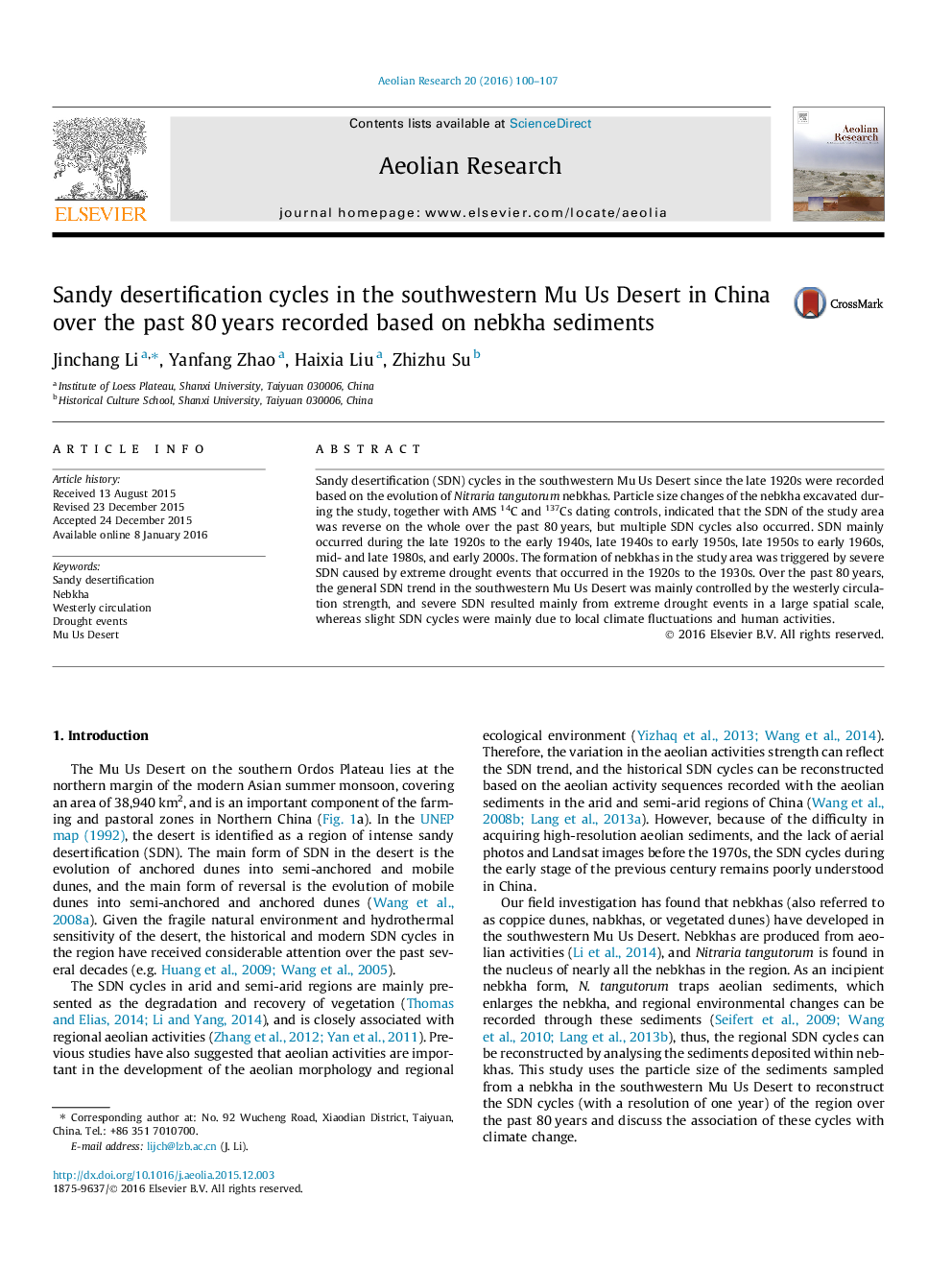| Article ID | Journal | Published Year | Pages | File Type |
|---|---|---|---|---|
| 6426254 | Aeolian Research | 2016 | 8 Pages |
â¢Sandy desertification cycles were recorded based on the evolution of nebkhas.â¢Sandy desertification of the Mu Us Desert was reverse over the past 80 years.â¢The formation of nebkhas was triggered by severe sandy desertification.
Sandy desertification (SDN) cycles in the southwestern Mu Us Desert since the late 1920s were recorded based on the evolution of Nitraria tangutorum nebkhas. Particle size changes of the nebkha excavated during the study, together with AMS 14C and 137Cs dating controls, indicated that the SDN of the study area was reverse on the whole over the past 80Â years, but multiple SDN cycles also occurred. SDN mainly occurred during the late 1920s to the early 1940s, late 1940s to early 1950s, late 1950s to early 1960s, mid- and late 1980s, and early 2000s. The formation of nebkhas in the study area was triggered by severe SDN caused by extreme drought events that occurred in the 1920s to the 1930s. Over the past 80Â years, the general SDN trend in the southwestern Mu Us Desert was mainly controlled by the westerly circulation strength, and severe SDN resulted mainly from extreme drought events in a large spatial scale, whereas slight SDN cycles were mainly due to local climate fluctuations and human activities.
